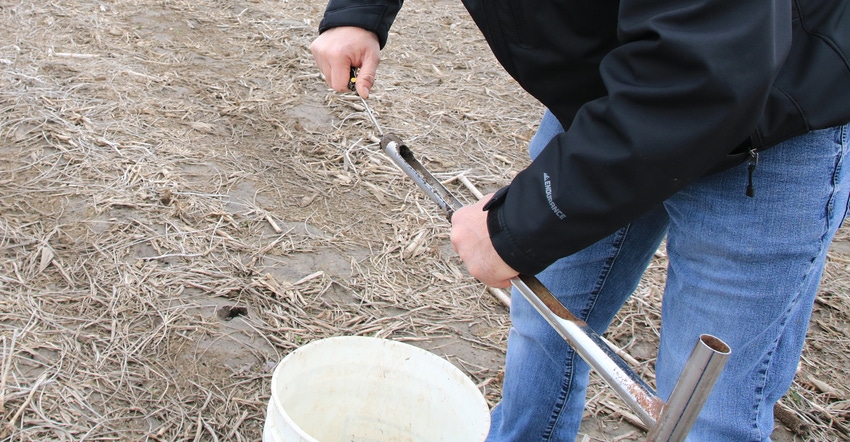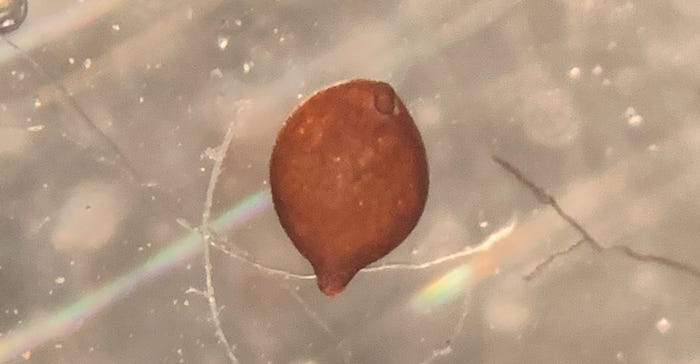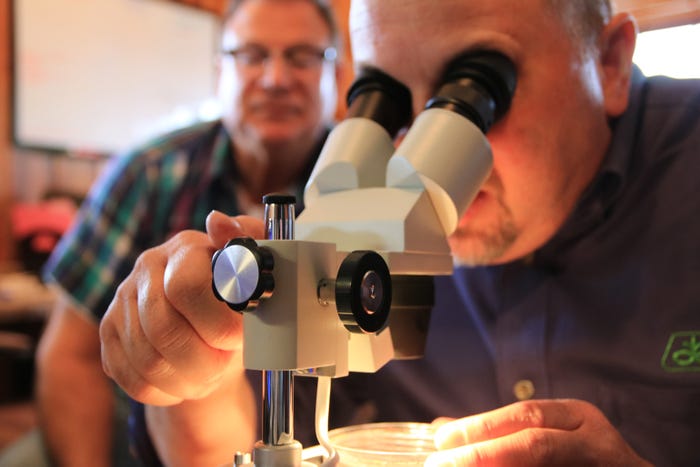
The No. 1 pest for soybeans in Illinois is soybean cyst nematode, or SCN. That’s why during the 2019 growing season — long before the coronavirus prompted Matt Montgomery to limit in-person farm visits — the central Illinois Pioneer field agronomist went soil testing with farmers, looking for the pest. He brought a microscope to give farmers the ability to see the problem up close.
“It’s the No. 1 soybean pest, but with a caveat: It’s the No. 1 nonweed pest,” Montgomery says. “Out of all the different pests that we battle, it’s weeds that can zero out yield.” He notes that a “clean” field during the off-season helps alleviate not only winter annual weed pressure but also nematode populations.
And don’t count on rain to help with SCN populations. “I suppose if you had some kind of intense flooding situation, where it occurred for multiple years, maybe we’d see some kind of reduction,” Montgomery allows. “But even in a year like 2019, where you have a lot of moisture in the spring and a lot of soupy conditions that stretched into June, you really aren’t going to see any tamp down in that.”
Tactics for SCN control
Choosing SCN-resistant soybeans and rotating crops are the two top tactics for fighting SCN. Rotating to a grass crop such as corn alone takes populations down 50%.
Syngenta also recently released a new resistant breeding line in PI 89772 in response to elevated populations of SCN on PI 88788, the industry standard for nematode resistance. It’s on about 95% of fields that use the resistance to fight the pest.
Pioneer offers more varieties of the established alternative breeding line, Peking, than any other breeder; it’s a yield-competitive contender, especially in northern Illinois. But Syngenta’s new line offers a third route, with Golden Harvest GH2329X and NK Brand S23-G5X. It’s a maturity group 2.3 bean with SCN resistance, good sudden death syndrome tolerance and the Roundup Ready 2 Xtend trait.

HUNDREDS: A female nematode is filled with hundreds of eggs ready to hatch.

Reminded of his days working in University of Illinois Extension, Montgomery says new sources of resistance can be hard to work with because sometimes, they fail to yield competitively with other varieties. That’s why 15 years ago, another option called Hartwig never really took off.
“It just wasn’t able to get the kind of yield level at that time that really allowed it to gain entry into the industry as a whole,” Montgomery says. “People continue to work and try to find a way to get that line to produce the kind of yield that makes it a salable product, a product that people will be interested in. And when that day comes, we’ll all be excited.”
Sky isn’t falling
Referencing PI88788’s declining effectiveness, Montgomery says it’s on a field-by-field basis. Coupled with rotation and clean fields, he says the source of resistance can still be used effectively — even if it means planting corn two years in a row to starve exceptionally high SCN populations of a legume host.
Seed treatments such as Ilevo fungicide seed treatment, while primarily meant for sudden death syndrome, also help to add to a “cocktail” of controls, Montgomery says.
“I’m not ready to say the sky is falling just yet,” he adds. “For the moment, we’re in good shape with the tools we have — but yes, the day will come where it will be great to have some other sources of resistance, and as those tools are introduced, I think we’ll all clap our hands.”

ZOOM IN: Matt Montgomery focuses on a female nematode to show Pioneer seed representative Lonny Rhodes.

Montgomery advises growers to soil sample for SCN and keep track of egg counts with their seed advisers. If counts get critically high despite all other efforts, the University of Illinois Plant Clinic is able to field HG type shifting tests, which show the percentage of nematodes on a field that feed on resistant soybeans.
One heavy-handed tactic — to rotate the source of resistance in the soybeans planted on a field every other year — is an option for growers with hard-to-control SCN populations, Montgomery concludes.
About the Author(s)
You May Also Like




